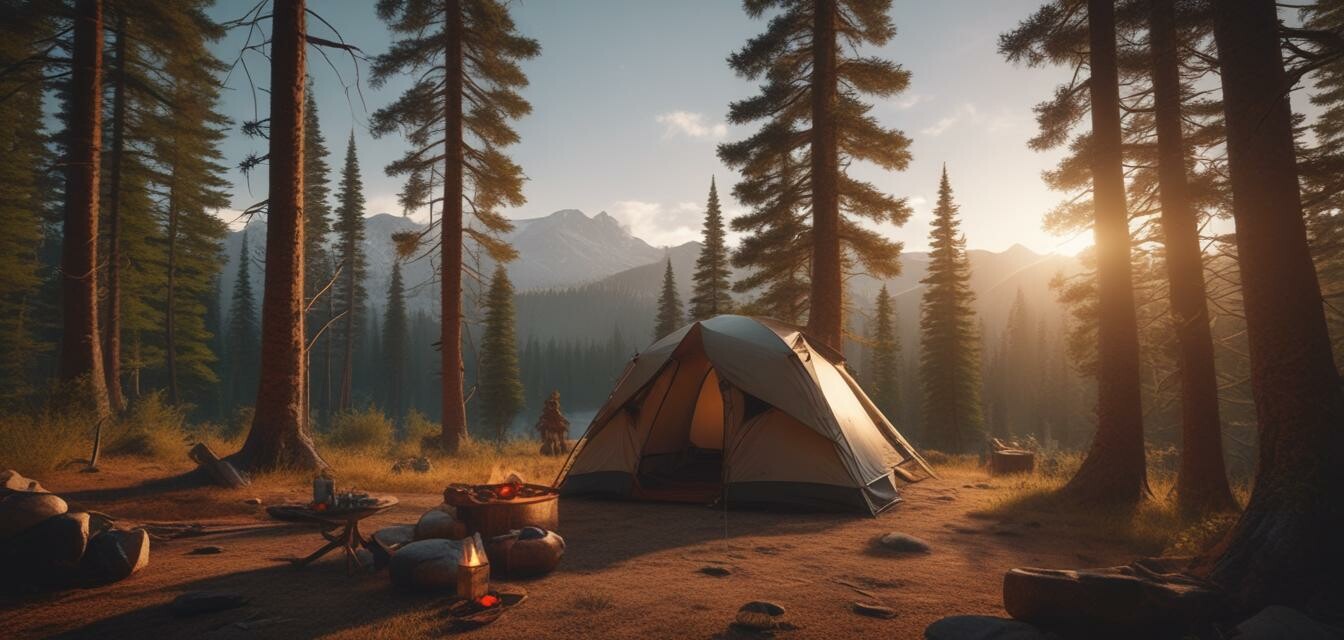
How to Set Up Camp: A Visual Guide for Beginners
Key Takeaways
- Choose a campsite wisely, considering terrain and safety.
- Ensure you have the right gear before your trip.
- Follow a step-by-step process for efficient setup.
- Prioritize safety and respect for nature at all times.
Setting up camp for the first time can be daunting. However, with a little guidance and the right steps, beginners can create a comfortable and safe campsite. This visual guide outlines the essential steps for setting up your camp effectively.
Step 1: Choose the Right Campsite
Your campsite selection is crucial. Look for flat, dry ground that's away from hazards like falling branches or flooding.
Factors to Consider:
- Avoid low areas (risk of flooding).
- Stay at least 200 feet away from water sources.
- Check for dead trees that may pose a risk of falling.
- Be respectful of the environment and local regulations.
Step 2: Gather Your Gear
Before heading out, ensure you have all the necessary equipment:
| Essential Gear | Description |
|---|---|
| Tent | Your shelter for the night. |
| Sleeping Bag | For warmth and comfort while sleeping. |
| Cooking Equipment | Stove, pots, or grill for meal preparation. |
| First Aid Kit | For any minor injuries encountered. |
| Navigation Tools | Map, compass, or GPS for finding your way. |
Step 3: Setting Up Your Tent
Once you've chosen the right spot and gathered your gear, it's time to set up your tent. Here’s how:
- Unpack your tent: Lay it out on the ground where you'll set it up.
- Insert the poles: Assemble the tent poles and insert them into the corresponding sleeves or clips.
- Secure the tent: Use stakes and guylines to secure the tent to the ground, ensuring it withstands wind.
- Check for stability: Ensure the tent is taut and that all zippers and seams are functional.
Step 4: Create a Cooking Area
A designated cooking area is essential for a safe and organized campsite. Here are some tips:
- Set it at least 200 feet from your sleeping area.
- Use a portable stove or grill for cooking, following all safety protocols.
- Keep food in sealed containers to avoid attracting wildlife.
Learning more about cooking gear? Check out our Cooking & Meal Prep category.
Step 5: Organize Your Gear
To make your camping experience enjoyable, keep your gear organized:
- Use storage bags to separate cooking gear, clothing, and other supplies.
- Have a specific area for personal items to minimize clutter.
- Label bags or containers for easy access.
For tips on choosing the right backpack, visit our Backpacks & Carriers page.
Step 6: Setting Up a Fire Pit
Having a campfire can enhance your experience. Here’s how to set one up safely:
- Choose a safe location: Make sure it’s away from your tent and in a clear, open area.
- Dig a fire pit: About 1 foot deep and 2 feet wide, surrounded with rocks if possible.
- Gather materials: Collect tinder, small sticks, and larger logs for your fire.
- Light the fire: Using tinder and small sticks, let the fire grow before adding larger logs.
Step 7: Safety Precautions
Always prioritize safety when camping:
- Keep a first aid kit handy.
- Know the local wildlife and how to avoid encounters.
- Follow all local fire regulations and campfire safety protocols.
Stay informed on camping safety by checking our Camping News and Trends.
Pros
- Improves confidence in camping skills.
- Creates a comfortable and enjoyable experience.
- Fosters respect for the outdoors.
Cons
- Requires some physical effort to set up gear.
- Weather conditions can impact the camping experience.
Conclusion
Setting up camp doesn't have to be intimidating for beginners. With these easy-to-follow steps, you can create a comfortable and safe campsite that will enhance your outdoor adventure. For more tips and expert advice, explore our Camping Tips and Tricks section.